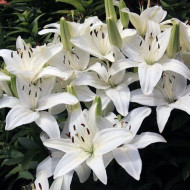We grow a white lily on the windowsill and in the open field
Content
General description of the white lily
The flower is not named by a woman's name, as it might seem. In translation from the ancient language of Gauls, lily means "white-white". The snow-white beauty is a well-deserved favorite of gardeners, perfumers and florists. Culture is found all over the world. The homeland of Candidum Lilies is the Mediterranean, other varieties grow in Tibet, Thailand, America, Japan, China and the Alps.
The general description is as follows:
- the stem reaches 1.5 m in height;
- leaves are lanceolate, 15 cm long, 2-3 cm wide, growing from the stem;
- flower 20-25 cm in diameter;
- the petals are uniformly white.
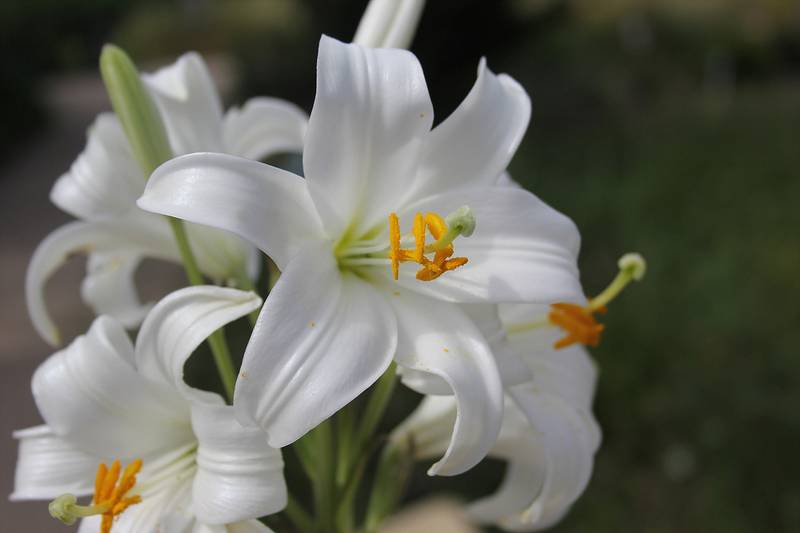
There are varieties (for example, White medicinal lily) grown exclusively for cosmetic and perfumery purposes. The medicinal properties of the Candidum lily variety (another name is the Madonna's flower) have long been used in the production of tinctures and lotions.
White lily flowers contain the following components:
- essential oils;
- vanillin;
- linalol;
- acetic, palmitic, cinnamic, propionic acids;
- flavonoids.
The plant has many beneficial properties. For example, by brewing fresh petals in chilled boiled vegetable oil for 2.5 weeks, an elixir is obtained that helps with:
- toothache;
- inflammation of wounds;
- burns, abscesses and bruises;
- pulmonary and cardiovascular diseases;
- arthritis.
In cosmetology, tincture is used to cleanse the skin, remove freckles.
Video "Reproduction of the white lily"
This video tells about the methods and rules for flower reproduction.
Types and varieties of white lilies
Being a thermophilic plant, flowers feel great in the garden and apartment. Breeders have bred more than a hundred different varieties that can decorate any room.
Room lily candidum
A hybrid developed for the conditions of a city apartment. It has a short stem and miniature buds. It does not smell as pronounced as garden congeners.
Asian hybrids
Breeders managed to breed oriental hybrids that take root in different conditions. They are somewhat different from their progenitor: the stems have lengthened, the need for sun has decreased, and the ability to withstand temperature extremes characteristic of our country has appeared. Popular varieties:
- Annamaria Dream. A tall plant, the stem stretches up to 60 cm. The petals are double, monochromatic, the stamens are claret. About 9 buds are formed on one stalk.
- Casablanca Popular hybrid. A tall stem of 1.2 m supports massive buds 25 cm in diameter.
- Extravaganza (Extravaganza). The variety is beautiful and fragrant. The petals are bright white, covered with dark specks. There is a longitudinal bright pink stripe.
- Siberia.Named for its rare frost resistance, unusual for wild flowers. Corrugated petals.
European hybrids
Cultures created for European countries have different characteristics. Here is an approximate list:
- medium-sized buds - up to 12 cm;
- delicate and strong aroma;
- flowers with tubular or funnel-shaped perianth;
- the length of the stem is about 1.5 m.
All European hybrids are capricious in their care, they are afraid of the cold, therefore, with the onset of frost, flower beds must be covered.
Of the common varieties, Apollo can be called. It grows up to 1.2 m. Petals are white, small dark spots are visible in the center. The flowering period is the first half of summer.
- Room lily candidum
- Asian hybrid Annamaria Dream
- European Apollo hybrid
Features of home care
Although growing a flower in an apartment cannot be called difficult, certain conditions are needed for success. A balcony or loggia is suitable for growing, but only in the warm season. With the onset of cold weather, the culture is transferred to a room where the temperature is maintained at least 15 ° C.
Keep in mind that if the necessary conditions are provided, the culture is capable of stretching to a height of one and a half meters. As a result, a lush bush with expressive leaves grows. The buds in indoor conditions are massive and colorful, the color depends on the selected variety.
Lighting and temperature
When growing a culture in a pot, follow the rules:
- germinate seeds in a dark place;
- as the first green sprouts hatch, the pot is transferred to a lighted windowsill, preferably facing southeast or west;
- if sunlight falls on the plant constantly, after lunch it must be moved into the shade.
Indoor bush normally tolerates temperature fluctuations from low to high. With the onset of heat, the flowerpot is exposed to fresh air - a glazed loggia or balcony. It is important to ensure that the leaves are not exposed to direct sunlight, which burns the delicate plates.
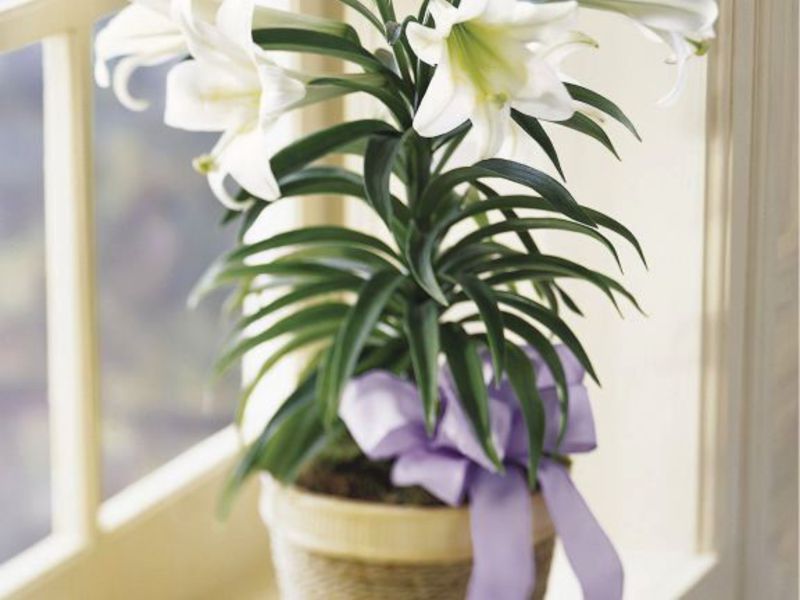
Soil composition
The soil in the flowerpot is selected light, loose, with good air permeability. The soil is purchased from a specialty store or prepared. Nutrient substrate includes:
- 3 measures of turf land;
- 1 measure of deciduous;
- 1 measure of humus;
- 1 part coarse sand.
Small narrow containers are suitable for growing, but wide and deep ones worsen flowering. The bottom is lined with small stones or expanded clay; fragments of broken brick are also suitable. The drain fills one third of the container.
Watering and fertilizing
Moisture values are not critical for growing indoor lilies. It is enough to spray the culture with warm water from a spray bottle, and on hot days, install a tray with water and pebbles from below. Once a week, the leaves are wiped with a damp cloth so that the plant can breathe fully.
Watering is carried out often, but with a small amount of water. First, they inspect the condition of the earth - if it has dried up 4 cm deep, it's time to water. Soft water without impurities at room temperature is good. Excess moisture is harmful - the bulbs begin to rot.
Top dressing is important - the culture loves it. Fertilizers are applied several times a year:
- The first fertilizing with mineral fertilizers is carried out immediately upon planting.
- When rapid growth begins, nitrogenous fertilizers will be needed.
- During the growing season and the formation of the first buds, the plant needs potassium and phosphorus.
- In the spring (1 time in 3 months), organic feeding is introduced - mullein infusion, diluted in a ratio of 1:10.
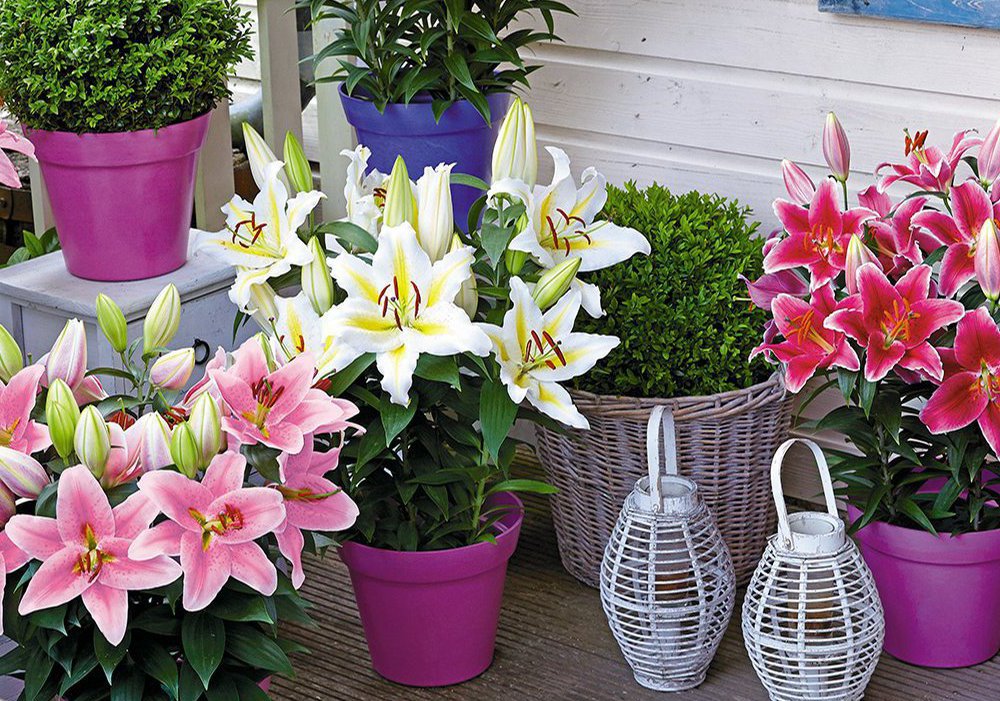
Planting and transplanting
It is advisable to plant a crop in autumn, preferably in October. When buying, choose one-color bulbs, without signs of decay, wrinkles and scales.
There is 1 onion for 1 flowerpot.Approximately for a pot with a height of 15 cm, a 5 cm bulb is suitable. Before planting, disinfection is carried out, a solution of potassium permanganate or "Karbofos" is taken as an antiseptic. If a long container is used, the bulbs are planted 5 cm apart. Deepen the planting material into the ground by 2/3.
The transplant is carried out every 3 years. Usually, in an adult flower in a container, they simply change the soil. At the same time, each onion is shaken off from the old earth and cleaned of dead scales.
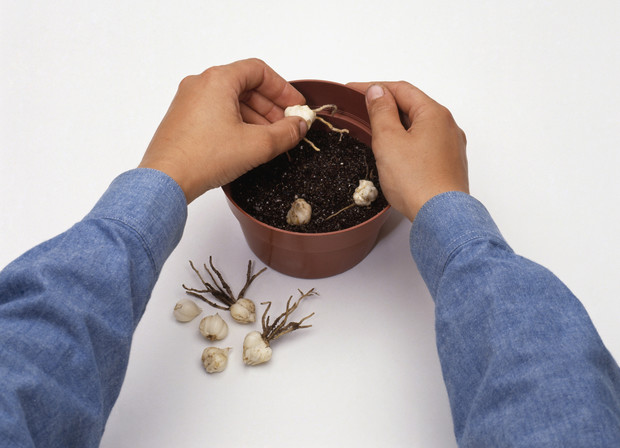
Growing problems
Indoor flowers are not afraid of diseases and insects, if agrotechnical requirements are observed during cultivation. With poor-quality care, foliage and stems appear:
- spider mite (with a lack of watering);
- aphid;
- mealybug.
You can understand that the plant was attacked by insects by the following signs:
- foliage turns yellow and falls off;
- the stem withers.
To combat pests, the culture is treated with special preparations.
Inadequate care results in leaf blanching (improper watering, high room temperature) or darkening of flowers (low room temperature). If the crop is watered too abundantly, it becomes susceptible to gray mold. The infection affects the lower leaves, then enters the tuber. It is impossible to cure the disease, the plant dies. Another danger is fusarium. Occurs when the bulb is mechanically damaged. For treatment, the damaged areas are sprinkled with crushed activated carbon.
Most varieties of the crop have a strong odor, sometimes causing headaches. Try to keep containers of flowers in a ventilated area or on a loggia.
Outdoor cultivation
Having purchased high-quality bulbs, you can start planting them in the garden at your dacha. The principle of planting in spring and autumn is the same.
Site and soil selection
For hybrids, sunny places are suitable, species lilies need to provide partial midday shade. There should be no dense plantations near the flower bed that create an excessively humid microclimate and block the flowers from the sun.
The soil requires light, loose, fertile, low acidity. Lilies take root well on limestones. When landing in heavy clay soils, sand is used as drainage. Dig up the soil, getting rid of weeds.
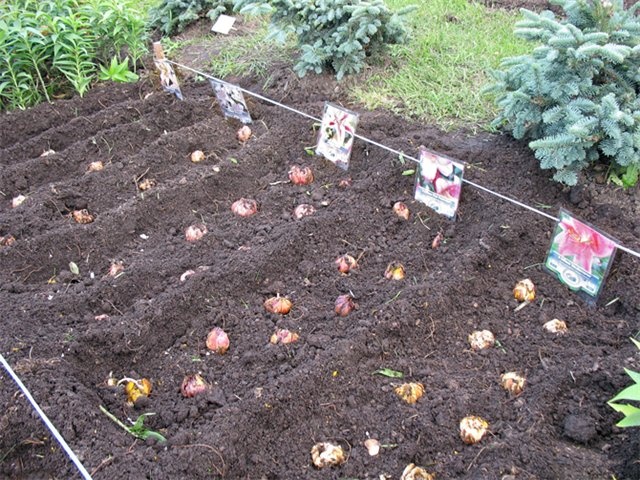
Timing and landing algorithm
If bulbs with a large number of shoots are sold in stores, it is advisable to purchase them shortly before planting, choose the season at your discretion. The ideal option is the beginning of autumn, this will allow the flowers to grow root foliage for winter.
The disembarkation is carried out according to the following scheme:
- Digging holes 15-20 cm deep, in increments of 25-30 cm.
- The bottom is drained by covering it with a layer of sand.
- An onion is stuck into the sand, sprinkled with the same sand, since it is easier and faster for young roots to grow in loose soil. The optimum depth is 10–12 cm, and a 3 cm layer of soil should grow on top.
- They fill the pit with soil, ram it a little with the palm.
- Water the landing site abundantly.
If planting is carried out in the fall, the site is mulched, sprinkled with peat or sawdust. With increased acidity, humus is introduced into the soil from fallen leaves with the addition of peat. Mulch layer - 5 cm.
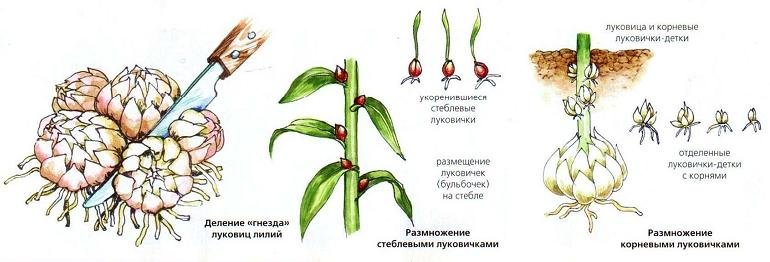
Flower care
Fertilizers are recommended to be applied at the planting stage by adding it to the layer of sand in the pit. Take on a bucket of humus:
- 100 g superphosphate;
- 50 g of potassium sulfate;
- 500 g of ash (per square meter).
Further feeding is carried out throughout the growing season:
- at the beginning of the season - ash solution or dry substance, applied at the root;
- before flowering - complex potassium-containing mineral fertilizers.
Water the culture as needed. Excess moisture is harmful, but on dry days, the amount of watering is increased. Water is poured under the root without affecting the basal foliage.Winter shelter is only needed in regions with very harsh winters.
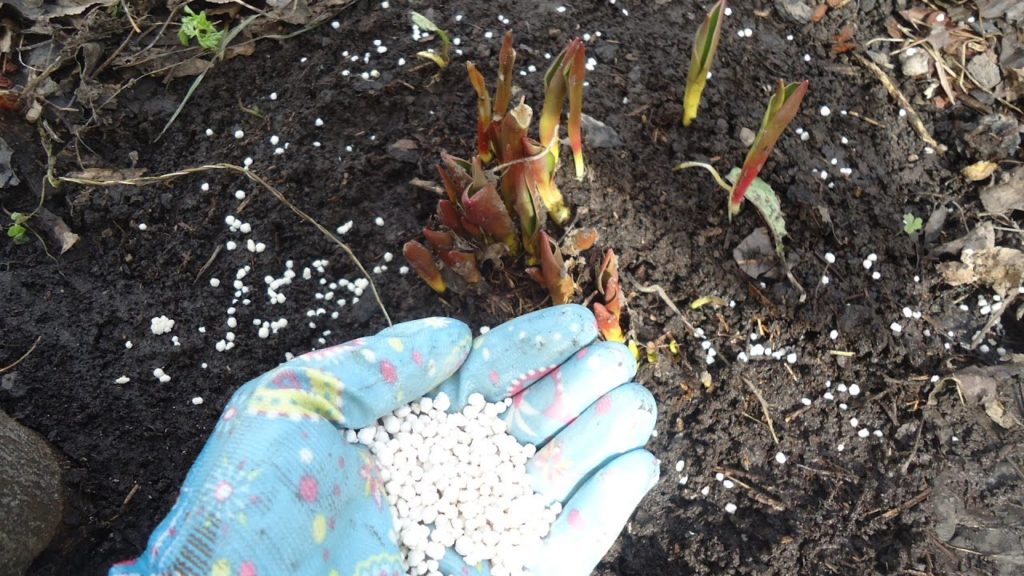
Florist reviews
Asiatic lilies (Monaco variety) were grown for the first time. I planted 3 onions in three-liter pots, kept them on the windowsill. The result pleased - the same as in the pictures.
For the sake of experiment, I planted lilies on the balcony. I bought special Asian hybrids, just under the pot. It is better to plant a bouquet of 4-5 pieces (if the container allows), so they look prettier and bloom longer.
To grow a flowering scenic plant, you just need to follow some simple rules. And then the snow-white live lilies will decorate not only the summer cottage, but also the interior of the apartment.



